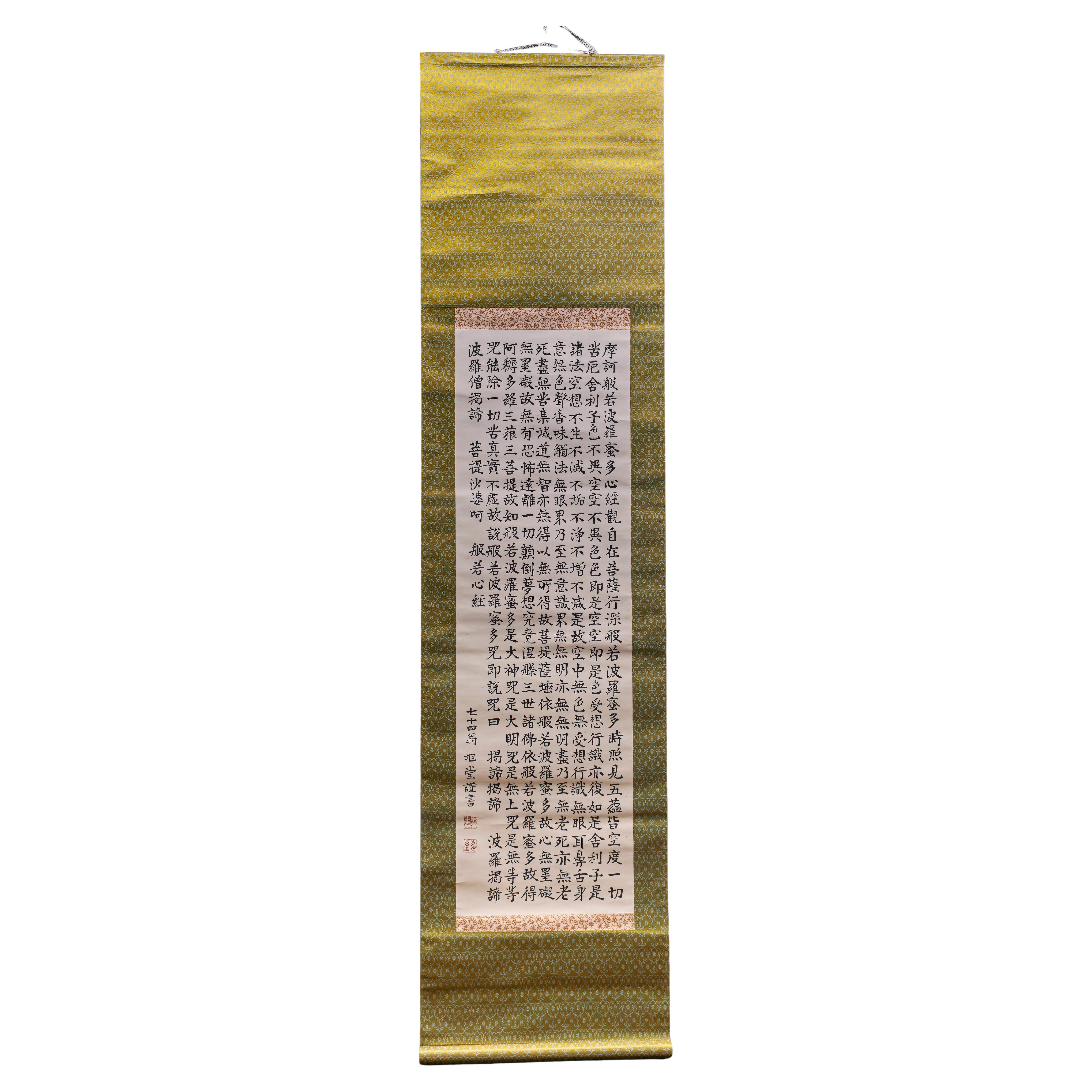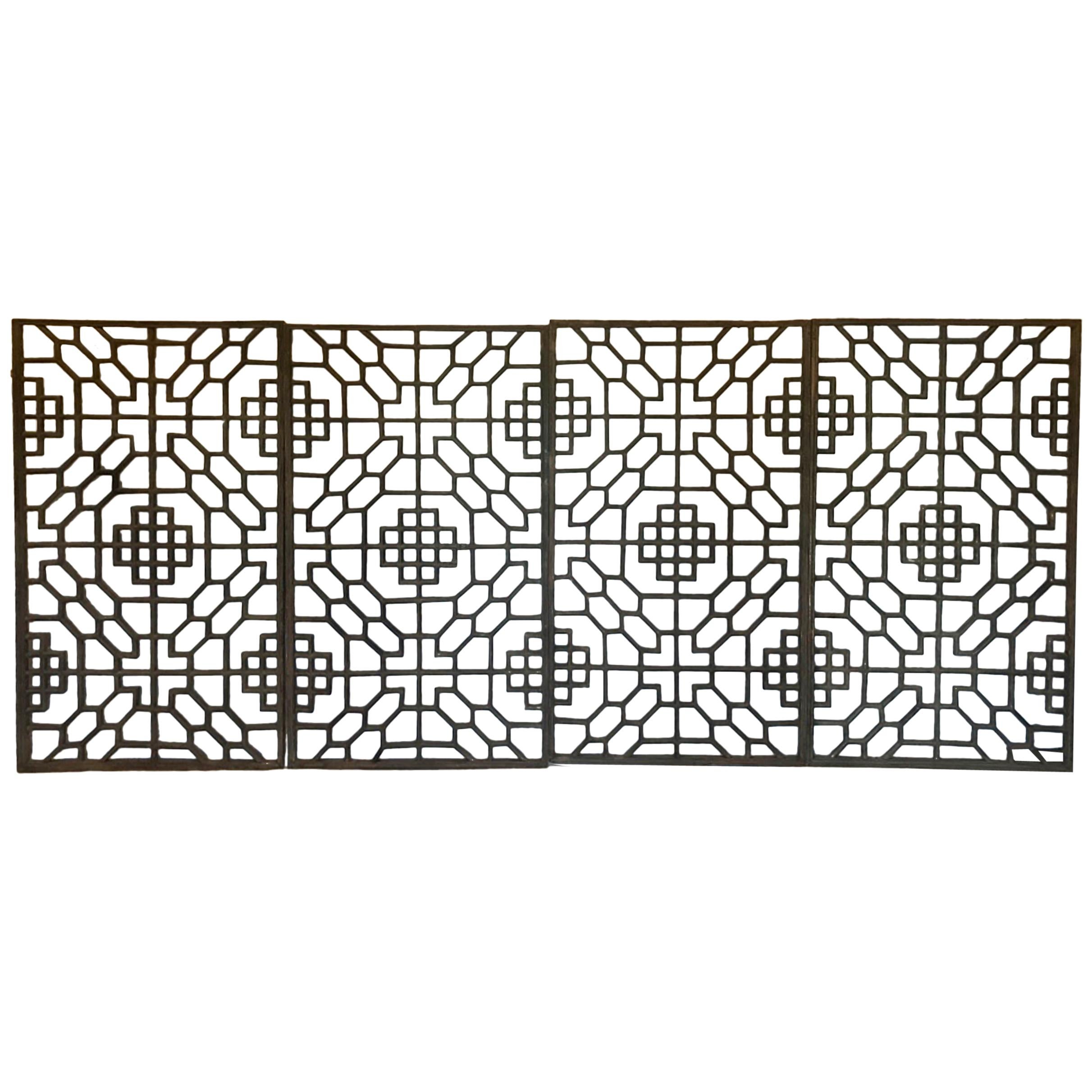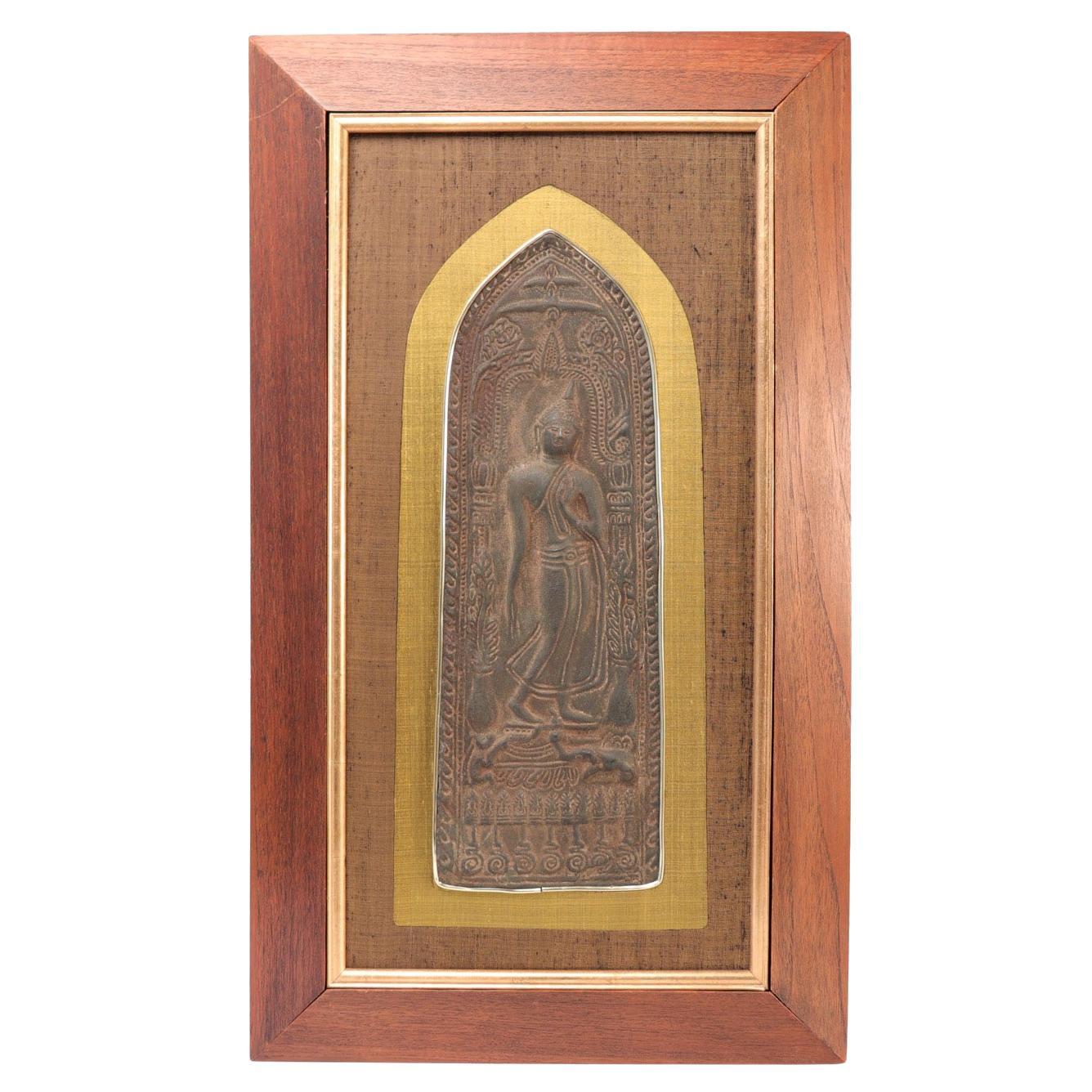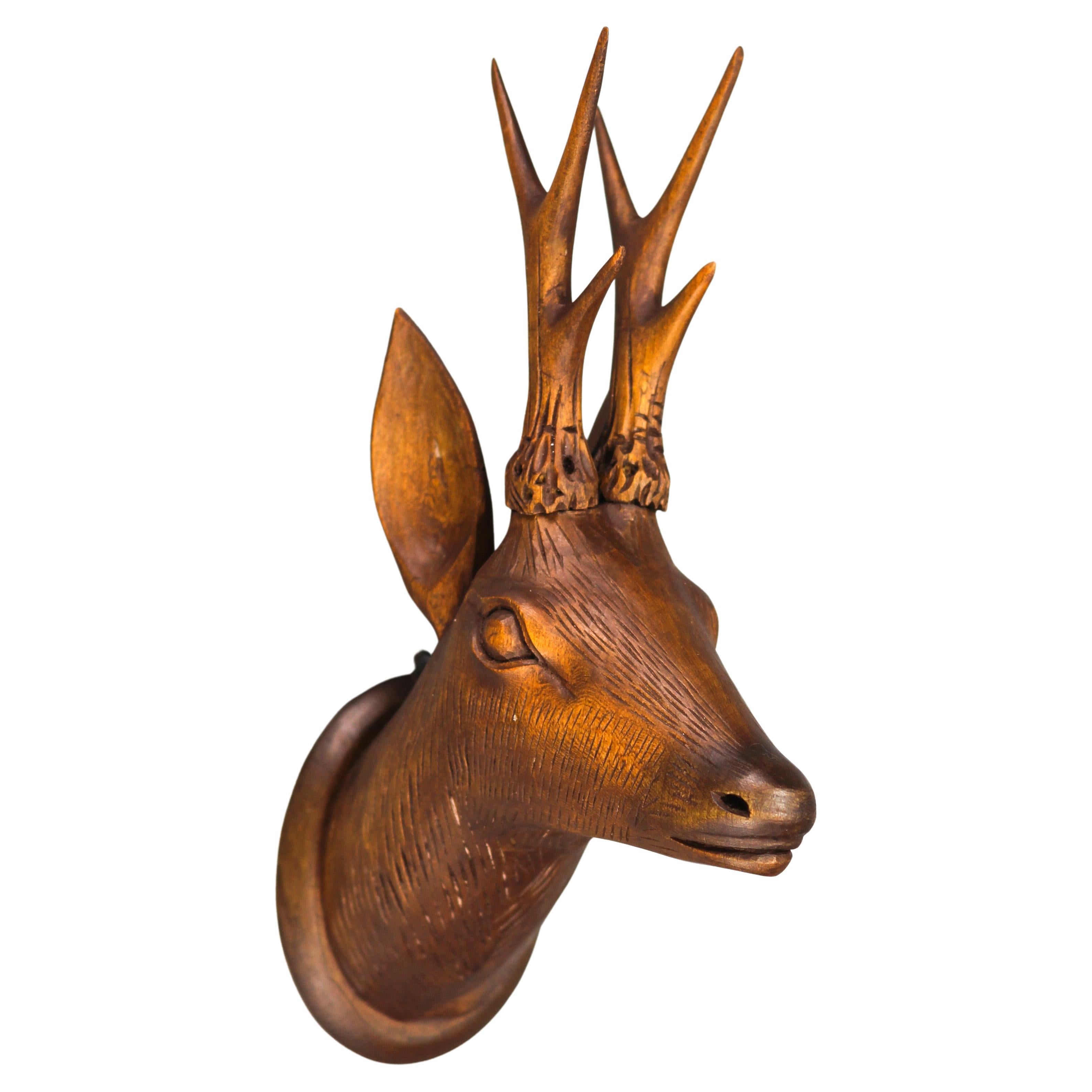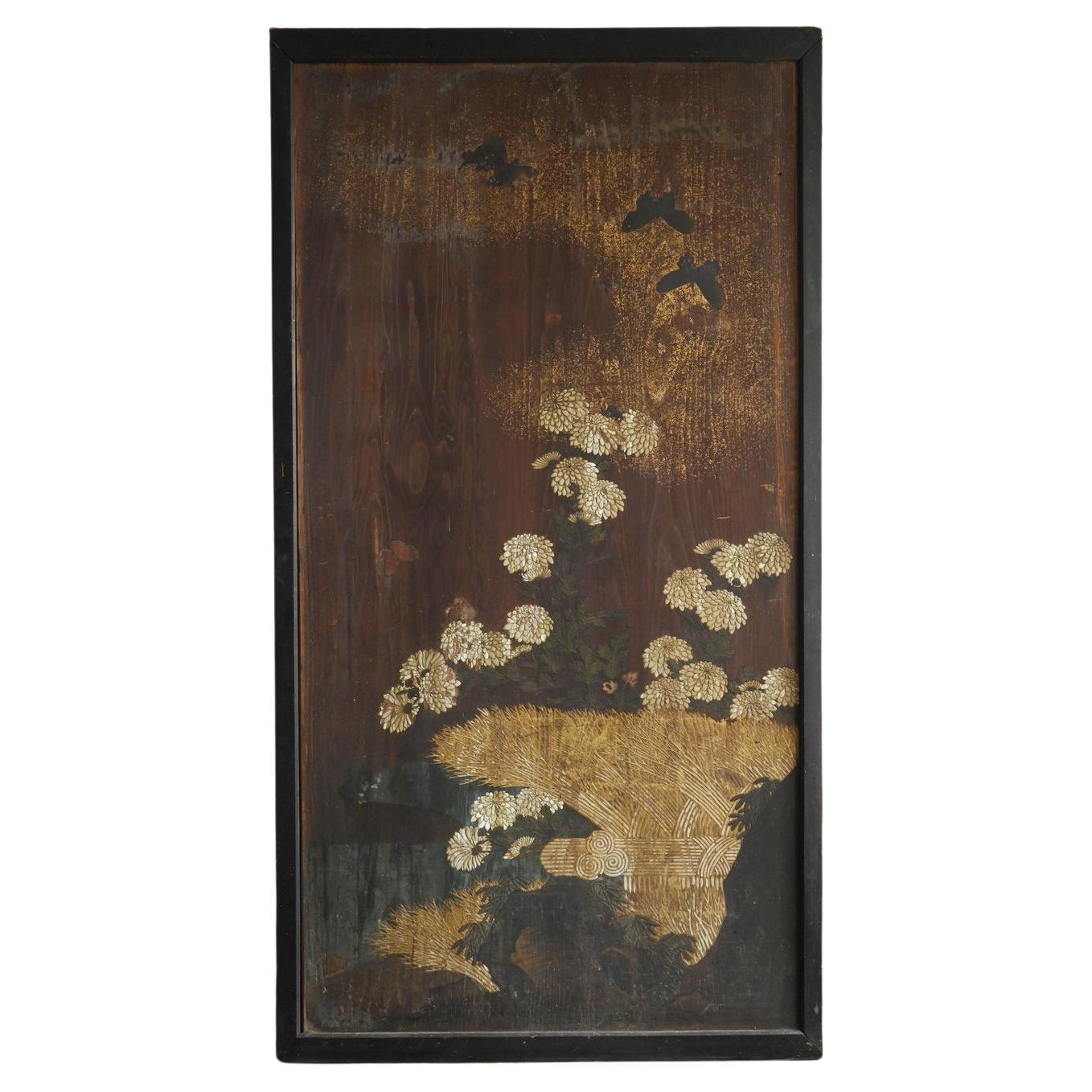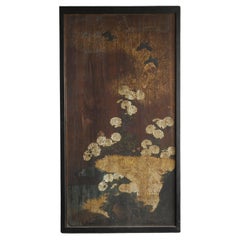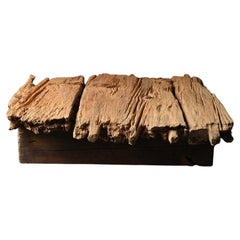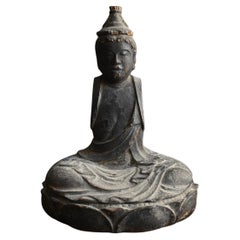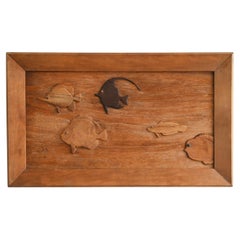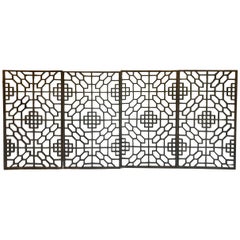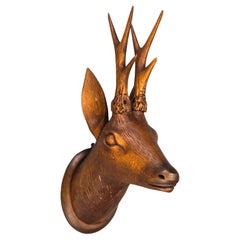Items Similar to Japanese antique wooden blocks/1800-1920/paper charms/Buddhist art
Want more images or videos?
Request additional images or videos from the seller
1 of 21
Japanese antique wooden blocks/1800-1920/paper charms/Buddhist art
About the Item
This is a wooden woodblock produced in Japan from the late Edo period to the Taisho period (about 1800s to 1920s). The material used is something like beech wood, and the wood is decorated with fine relief carvings.
This woodblock was actually used at Horaiji Temple, an ancient temple of the Gochi Order of the Shingon sect in Shinshiro City, Aichi Prefecture. At the top of the temple is a hall with Yakushi Nyorai as its main deity, and the approach to the temple is a series of 1,425 stone steps. Toshogu Shrine and Niomon Gate, built by Tokugawa Iemitsu, are designated as National Important Cultural Properties of Japan, and the temple is still a sacred site visited by many worshippers.
This woodblock is used to print paper amulets to be given to worshippers, and is, so to speak, the “original version of the amulet” that contains the blessings of the Buddha. Yakushi Nyorai is seated in the center, with messengers immediately to his left and right, and the Twelve Divine Generals surrounding him.
Yakushi Nyorai is believed to be the “Buddha who heals illness” in Buddhism, and is believed to have the power to remove illness and suffering from the body and mind. Serving at his side are the "Twelve Divine Generals. Each of them corresponds to a Chinese zodiac sign, and as messengers of Yakushi Nyorai, they are believed to protect the faithful and ward off misfortune.
The lower part of the plate is inscribed in Chinese characters, “Mineyakushi - Horaiji,” and the best of the temple's beliefs and arts and crafts of the time are beautifully condensed in this small plate. The delicate line carving is a masterpiece, showing the high level of handcraft skill down to the smallest detail. The masterful skill and spirituality of the carver have brought the world of Buddha to life on this quiet wooden board.
Despite its compact size, when hung on a wall, it brings a sense of tranquility to a space, and fits well not only in a Japanese-style room, but also in a modern Western-style room, an entryway, or a study. It is sure to bring a moment of quiet prayer into your daily life when displayed as an interior decoration.
The wood has some weathering due to age, such as insect bites, chipped corners, and warping, but these are proof that the piece has survived the passage of time, and deepen the charm of the antique. The carvings are in excellent condition, and are so precise and well preserved that they could still be used as plates.
Old woodblocks in such good condition with a clear origin are rarely found in the antique market. We hope you will take this opportunity to consider this one-of-a-kind piece.
Weight: 0.8 kg
- Dimensions:Height: 11.62 in (29.5 cm)Width: 8.78 in (22.3 cm)Depth: 0.71 in (1.8 cm)
- Style:Edo (Of the Period)
- Materials and Techniques:
- Place of Origin:
- Period:
- Date of Manufacture:1800-1920
- Condition:
- Seller Location:Sammu-shi, JP
- Reference Number:1stDibs: LU5487244633262
About the Seller
5.0
Platinum Seller
Premium sellers with a 4.7+ rating and 24-hour response times
Established in 2015
1stDibs seller since 2020
1,524 sales on 1stDibs
Typical response time: 4 hours
- ShippingRetrieving quote...Shipping from: senzoku, Japan
- Return Policy
Authenticity Guarantee
In the unlikely event there’s an issue with an item’s authenticity, contact us within 1 year for a full refund. DetailsMoney-Back Guarantee
If your item is not as described, is damaged in transit, or does not arrive, contact us within 7 days for a full refund. Details24-Hour Cancellation
You have a 24-hour grace period in which to reconsider your purchase, with no questions asked.Vetted Professional Sellers
Our world-class sellers must adhere to strict standards for service and quality, maintaining the integrity of our listings.Price-Match Guarantee
If you find that a seller listed the same item for a lower price elsewhere, we’ll match it.Trusted Global Delivery
Our best-in-class carrier network provides specialized shipping options worldwide, including custom delivery.More From This Seller
View AllA rare wooden sliding door with Japanese paintings/1800-1920/Edo-Meiji
Located in Sammu-shi, Chiba
This is a wooden sliding door produced in Japan from the late Edo period to the Meiji period. This piece, which must have watched over people's lives for many years, is more than jus...
Category
Antique 19th Century Japanese Edo Paintings
Materials
Cypress
Japanese Wabi Sabi Antique Wooden Low Table/1800-1920/Sofa Table
Located in Sammu-shi, Chiba
This is a low table made from a part of a rare wooden ship “Kitamae-bune” obtained in Kanazawa, Hokuriku region. Kitamae-bune was an important trading ship that connected northern an...
Category
Antique 19th Century Japanese Meiji Sofa Tables
Materials
Oak, Pine
Japanese antique wooden Buddha statue / Edo period / 1600 to 1800
Located in Sammu-shi, Chiba
This wooden statue is a relic from Japan's Edo period, and within it lies a deep history that transcends time. Originally, it was part of a more intricate statue, likely adorned with...
Category
Antique 17th Century Japanese Edo Sculptures and Carvings
Materials
Cypress
Old Japanese wooden wall hanging tropical fish picture / 20th century
Located in Sammu-shi, Chiba
This is a tropical fish carving frame made in Japan, probably around the 20th century.
The frame is made of beech wood, and the base of the picture is paulownia wood.
Different types...
Category
20th Century Japanese Showa Wall-mounted Sculptures
Materials
Wood
A frame with an old Japanese Buddhist woodblock print / amulet / 1800-1912
Located in Sammu-shi, Chiba
This is a woodblock print made between the late Edo and Meiji periods (1800-1912).
It was originally a talisman given to visitors to temples as a good luck charm.
It is unclear which...
Category
Antique Late 19th Century Japanese Edo Prints
Materials
Paper
Japanese Antique Small Vase Made of Tin/1800s-1920/Casting Vase
Located in Sammu-shi, Chiba
This is a tin vase made from the late Edo period to the early Taisho period (1800s-1920).
It is made of cast iron and has detailed and beautiful expressions such as butterflies and ...
Category
Antique 19th Century Japanese Edo Vases
Materials
Tin
You May Also Like
Japanese Buddhist Hanging Scroll
Located in San Francisco, CA
Japanese Buddhist Hanging Scroll
Category
20th Century Wall-mounted Sculptures
Materials
Paper
Set of Four 19th Century Japanese Lattice Wooden Panels
Located in Los Angeles, CA
Set of four 19th century stunning, intricate lattice panels from Japan. Wood with naturally worn patina; traces of crackled finish. Each panel measures 35.5 inches wide and placed to...
Category
Antique 19th Century Japanese Edo Panelling
Materials
Wood
$9,990 Sale Price
33% Off
Thai Buddhist Votive Plaque
Located in Point Richmond, CA
Thai Buddhist Votive Plaque, Sukhothai style, cast in relief from a metal alloy of tin and lead with an iron like surface of a deep brown colour, depicting a relief image of a walking Buddha. His left foot planted firmly on the ground while his right heel is raised. His left hand is held upwards known as the Abhayamudra (the had gesture of reassurance and safety), his right hand hangs at his side, known as the posture of the Buddha in the Descent from the Tavatimsa Heaven. He wears a simple belted robe. Above the image is a two tiered honorific parasol and an arched ornamental doorway supported by a pair of columns with vases...
Category
Antique 15th Century and Earlier Thai Other Wall-mounted Sculptures
Materials
Lead, Tin
Antique Carved Wooden Deer's Head Wall Decoration, Germany, ca 1920
Located in Barntrup, DE
Antique Carved Wooden Deer's Head Wall Decoration, Germany, from ca. 1920
A beautiful antique wall decoration - entirely from linden wood carved dee...
Category
Vintage 1920s German Black Forest Sculptures and Carvings
Materials
Wood
Pair of Antique Folk Art Hand-Carved Wooden Circular Wall Plaques
Located in Hamilton, Ontario
This pair of antique folk art carved wall plaques are unsigned, but believed to have originated from Greece in approximately 1920. These circular wall plaques are done with a softwoo...
Category
Early 20th Century Greek Folk Art Wall-mounted Sculptures
Materials
Softwood
Antique German Hand Carved Wooden Deer Head with Glass Eyes, ca. 1920
Located in Barntrup, DE
Antique Black Forest-style German hand-carved linden wood deer head on a carved wall plaque.
An impressive antique hand-carved wall-hanging deer head made of linden wood with wooden ...
Category
Vintage 1920s German Black Forest Wall-mounted Sculptures
Materials
Wood, Glass
